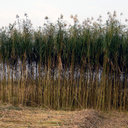Lipid peroxidation is another potential mechanism besides pore-formation underlying hemolysis of tentacle extract from the jellyfish Cyanea capillata.
Palavras-chave
Resumo
This study was performed to explore other potential mechanisms underlying hemolysis in addition to pore-formation of tentacle extract (TE) from the jellyfish Cyanea capillata. A dose-dependent increase of hemolysis was observed in rat erythrocyte suspensions and the hemolytic activity of TE was enhanced in the presence of Ca2+, which was attenuated by Ca2+ channel blockers (Diltiazem, Verapamil and Nifedipine). Direct intracellular Ca2+ increase was observed after TE treatment by confocal laser scanning microscopy, and the Ca2+ increase could be depressed by Diltiazem. The osmotic protectant polyethylenglycol (PEG) significantly blocked hemolysis with a molecular mass exceeding 4000 Da. These results support a pore-forming mechanism of TE in the erythrocyte membrane, which is consistent with previous studies by us and other groups. The concentration of malondialdehyde (MDA), an important marker of lipid peroxidation, increased dose-dependently in rat erythrocytes after TE treatment, while in vitro hemolysis of TE was inhibited by the antioxidants ascorbic acid-Vitamin C (Vc)-and reduced glutathione (GSH). Furthermore, in vivo hemolysis and electrolyte change after TE administration could be partly recovered by Vc. These results indicate that lipid peroxidation is another potential mechanism besides pore-formation underlying the hemolysis of TE, and both Ca2+ channel blockers and antioxidants could be useful candidates against the hemolytic activity of jellyfish venoms.





